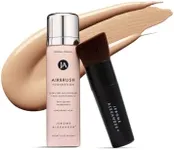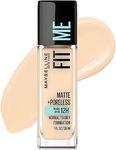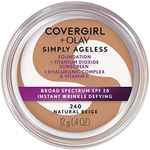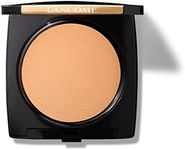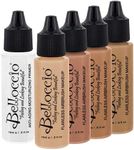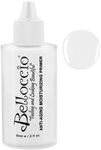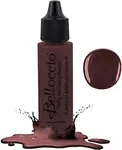Buying Guide for the Best Foundation For Wrinkles
Choosing the right foundation for wrinkles can be a game-changer in achieving a smooth, youthful appearance. The right foundation can help to minimize the appearance of fine lines and wrinkles, providing a more even and radiant complexion. When selecting a foundation, it's important to consider several key specifications to ensure you find the best fit for your skin type and concerns. Here are the key specs to look out for and how to navigate them.CoverageCoverage refers to how much the foundation can conceal imperfections on your skin. It ranges from light to full coverage. Light coverage is ideal for those who want a natural look and have minimal wrinkles. Medium coverage is suitable for those with moderate wrinkles and some discoloration. Full coverage is best for those with more pronounced wrinkles and other skin concerns. Choose the coverage level based on how much you want to conceal and the finish you prefer.
FinishThe finish of a foundation determines how it looks on your skin after application. Common finishes include matte, satin, and dewy. Matte finish is great for oily skin but can sometimes emphasize wrinkles. Satin finish offers a balance between matte and dewy, providing a natural look that works well for most skin types. Dewy finish gives a radiant, glowing look and is ideal for dry or mature skin as it can help to plump up the appearance of wrinkles. Consider your skin type and the look you want to achieve when choosing the finish.
FormulaFoundation formulas come in various forms such as liquid, cream, powder, and stick. Liquid foundations are versatile and work well for most skin types, especially mature skin, as they can provide hydration. Cream foundations offer more coverage and are good for dry skin. Powder foundations are best for oily skin but can settle into wrinkles, making them less ideal for mature skin. Stick foundations are convenient for touch-ups and offer buildable coverage. Choose a formula that complements your skin type and provides the desired level of hydration and coverage.
IngredientsIngredients in foundation can impact how it interacts with your skin. Look for foundations with hydrating ingredients like hyaluronic acid, which can help to plump up the skin and reduce the appearance of wrinkles. Antioxidants like vitamins C and E can protect the skin from environmental damage. Avoid foundations with alcohol or heavy fragrances, as these can dry out the skin and emphasize wrinkles. Consider your skin's sensitivities and needs when evaluating ingredients.
SPFSPF (Sun Protection Factor) in foundation helps protect your skin from the harmful effects of UV rays, which can accelerate aging and the formation of wrinkles. Foundations with SPF 15 or higher provide basic protection for daily wear. If you spend a lot of time outdoors, look for foundations with higher SPF or use additional sunscreen. Incorporating SPF into your foundation routine can help maintain youthful skin and prevent further wrinkle formation.
Application MethodThe method of applying foundation can affect its finish and how it sits on your skin. Common tools include brushes, sponges, and fingers. Brushes can provide a smooth, even application but may emphasize texture if not used correctly. Sponges can offer a more natural, blended look and are great for building coverage. Using fingers can warm up the product, making it easier to blend, but may not provide as even a finish. Choose an application method that you are comfortable with and that works well with the foundation formula you select.

